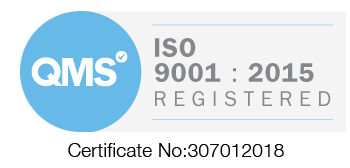
Author: Michael Flannery, BIM Director
As I approach the four year anniversary of my time at Design MEP, I have been reflecting on the strides we have made as a company and as individuals. One of the first goals I set when joining was the roll out of the ISO 19650 series of standards across the business.
Fortunately, with a great support network from company directors and a ready and willing team, we soon received our verification certificate from the British Standards Institute.
Some of you may wonder what ISO 19650 is? in industry terminology it is a standard for managing information over the whole lifecycle of built assets using Building Information Modelling (BIM).
The standard is designed to promote a collaborative working environment, where stakeholders can share information and data throughout the lifecycle of the asset.
We have seen plenty of benefits from the adoption of the ISO 19650 series of standards, some of the most prominent examples are;
Improved Collaboration
One of the main benefits of using ISO 19650 is the improvement in collaboration between stakeholders. The standard promotes a collaborative working environment where stakeholders can share information and data throughout the lifecycle of the asset. This ensures that all parties are working towards the same goals, reducing the risk of errors and omissions.
Better Quality Control
ISO 19650 ensures that information is managed in a consistent and structured way, reducing the risk of errors and inconsistencies. This leads to better quality control and a higher level of accuracy in the information that is produced. This is particularly important in the construction industry, where errors can be costly and can cause delays.
Reduced Risk
By using ISO 19650, risks can be identified and mitigated at an early stage, reducing the risk of delays and cost overruns. The standard ensures that all parties are working from the same information, reducing the risk of misunderstandings and errors.
Improved Efficiency
ISO 19650 promotes the use of digital technologies and BIM, which can improve efficiency in the construction process. Digital technologies enable stakeholders to collaborate more effectively, reducing the need for physical meetings and reducing the risk of delays.
Improved Sustainability
ISO 19650 promotes a more sustainable approach to building design and construction. By using BIM and digital technologies, stakeholders can identify opportunities to reduce waste, improve energy efficiency, and reduce the environmental impact of the built environment.
Improved Asset Management
ISO 19650 promotes a more holistic approach to asset management, ensuring that information is available throughout the lifecycle of the asset. This enables stakeholders to make informed decisions about maintenance, repairs, and upgrades, improving the long-term performance of the asset.
In conclusion, ISO 19650 is beneficial for managing built assets using BIM. The standard promotes collaboration, quality control, risk reduction, efficiency, sustainability, and asset management. By using ISO 19650, stakeholders can ensure that they are working towards the same goals, reducing the risk of errors and omissions, and improving the long-term performance of the asset.
None of these benefits are possible without having a team around you that is willing to learn and adapt to new standards and ways of working. At Design MEP, I have been fortunate to have that team.





